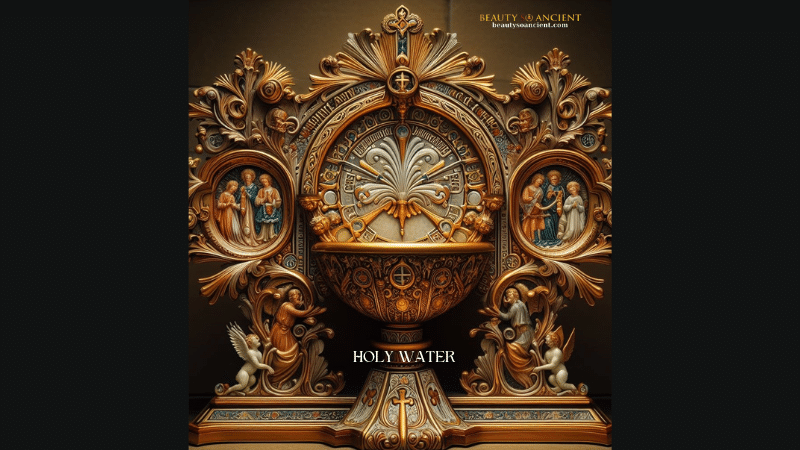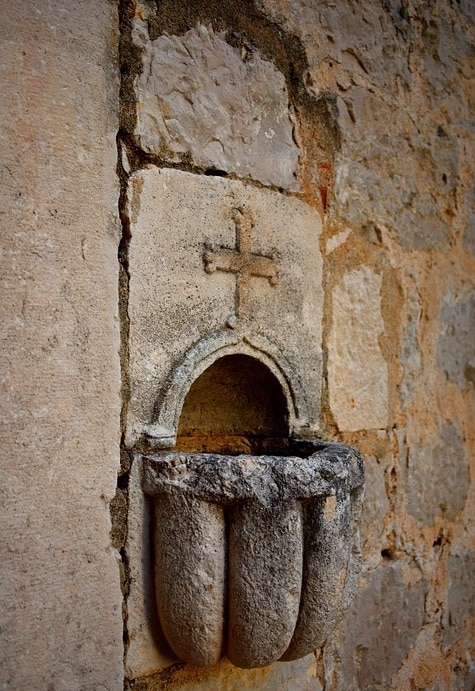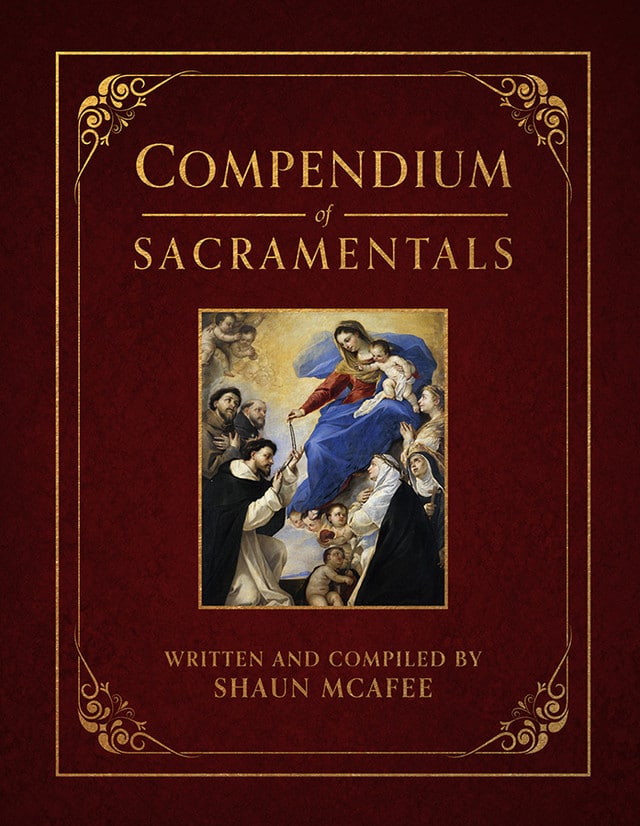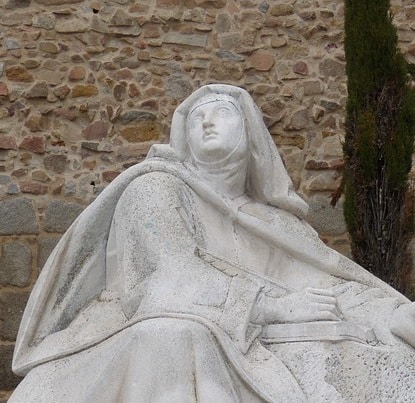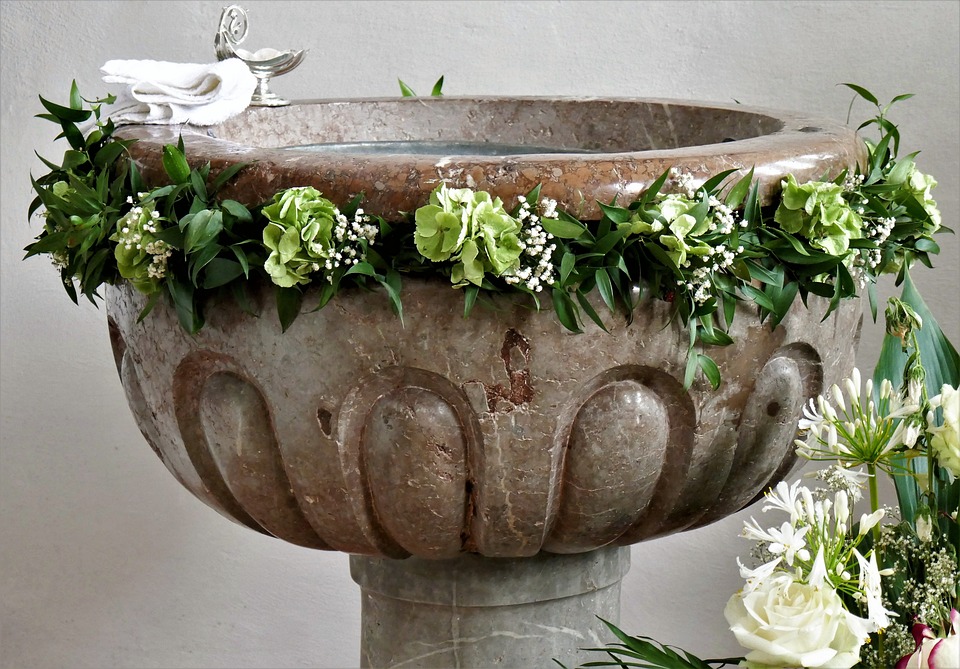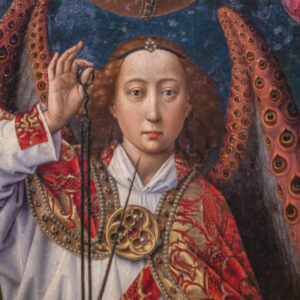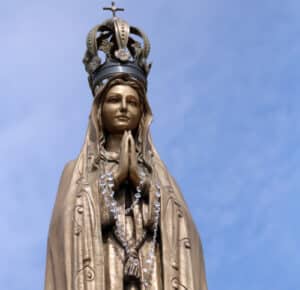Got Holy Water? Don’t Let Your Soul Get Too Dehydrated
“You shall draw water with joy out of the Savior’s fountains.”
Isaiah 12:3, Douay Rheims Bible
God clearly intended water to be the most essential matter in all of creation, as we see in Genesis 1:2 with the Lord’s Spirit hovering over the waters at the beginning of time. Water even preceded creation of the earth. The earth was borne out of water on the third day.
The use of holy water dates back to the Old Testament, a tradition employed by the Hebrews under the Old Law. The Jews had various ritual prescriptions for the sprinkling of water on the people, sacrifices, and sacred vessels in liturgical rites. See Numbers 5:17-18 and Numbers 8:7 and 19:6 for examples. The Psalmist praised the use of it:
“Thou shalt sprinkle me with hyssop, and I shall be cleansed: thou shalt wash me, and I shall be made whiter than snow.”
Psalm 50:9, Douay Rheims Bible
The modern Catholic prescription for holy water follows from the prophet Eliseus, who by God’s command took salt and cast it into the fouled waters of Jericho in order to purify it:
“And the men of the city said to Eliseus: Behold the situation of this city is very good, as thou my Lord sees;
4 Kings 2:19-22, Douay Rheims Bible
but the waters are very bad, and the ground barren. And he said: Bring me a new vessel, and put salt into it. And
when they had brought it, he went out to the spring of the waters, cast the salt into it and said: Thus saith the Lord: I have healed these waters, and there shall be no more in them death or barrenness. And the waters were healed unto this day according to the word of Eliseus that he spoke.”
The Early Church Making Waves
Following this tradition, it was thought that one of the earliest uses of holy water was an Eastern Church blessing of river water, either for purposes of Baptism by immersion or to commemorate the Baptism of Jesus.
Church historians report that the earliest uses of holy water beyond river blessings were based on priest visits to homes to bless the water, rather than performing the blessing in the church building.
Often a miniature holy water font was installed near the front door. Some attribute the earliest official endorsement of holy water to a decree by the sixth pontiff, Pope St. Alexander (reigning 115-125 AD) but some historians doubt these early accounts.
St. Basil claims holy water was an apostolic tradition. Clearly its use was established in the historical record by the 4th century. However, we need not be too concerned with these historical details. As a sacramental, the Church could ordain the use of holy water at any time in her pleasure, just as she could also discontinue it if deemed necessary.
In medieval times, we have accounts and paintings of commemorations of Christ’s baptism that would be performed including a solemn blessing in a nearby major river. In the River Jordan, thousands of pilgrims would gather on the shores and then submerge three times to obtain a blessing.
This tradition spread in the East, and it was reported that even many Mohammedans would join the Christians in the blessing in the Egyptian Nile. The Russian Orthodox famously celebrate this tradition by plunging into the icy waters on their observance of Epiphany on January 19.
The Feast of the Epiphany became associated with holy water based on the other two historical events of Christ ascribed to this day, the Baptism of Our Lord and the Wedding at Cana. In both of these events, water is used sacramentally. Based on tradition, it is piously believed that Holy Water blessed on the Eve of the Epiphany is more efficacious.
Many exorcists believe the Vatican II revisions to the water’s Rite of Exorcism was corrupted as the Council called for it to merely be adapted. However, the Council’s order was disobeyed and it was rewritten from scratch without consultation from exorcists. Not only were the prayers shortened and (ahem) “watered down” but they could be said in a vernacular tongue, rather than the Church’s sacred and much more precise and ordered language of Latin.
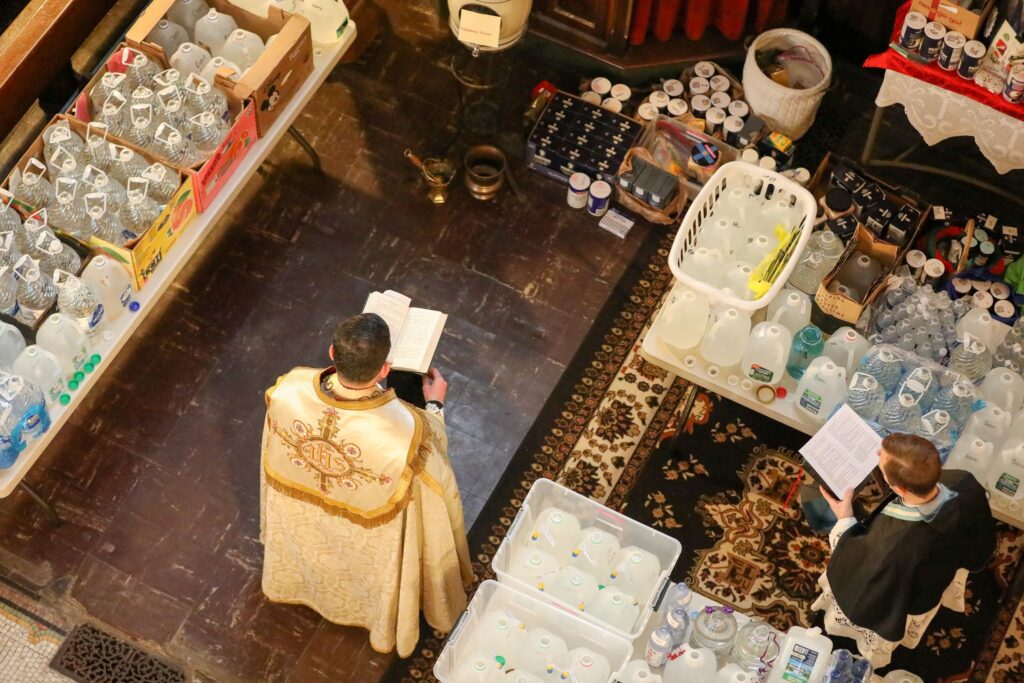
Cardinal Medina Estevez of the Congregation for Divine Worship approved the new Rite in 1998. However, after hearing from exorcists of the problems with it, he allowed for permission to be readily obtained for use of the older Rites in Latin.
According to the most well-regarded exorcists, Fr. Gabriel Amorth, the 1998 Rite was characterized by him as “completely ineffectual.”
The Potency According to St. Teresa of Avila
Many of the saints have recommended liberal use of holy water. Saint Teresa of Avila declared:
“I have myself felt an extraordinary consolation when I have used holy water. It is certain that I have felt a great joy and inner peace which I cannot describe, a joy with which my soul was quite refreshed. This is not merely an effect of the imagination, nor a rare occurrence. I have experienced it frequently and paid special attention to it. On these occasions I feel like one who, suffering intense thirst, takes a glass of water and is quite refreshed.”
Autobiograpy of St. Teresa (coupon code BSA for 50% off)
St. Teresa also describes an incident that explains its value as a weapon of spiritual warfare:
One night of All Souls Day, I was in an oratory. I had just said one nocturne and was repeating some very devotional prayers that follow it… when the devil himself alighted on the book, to prevent me from finishing the prayer. I made a sign of the cross and he went away. I then began again and he returned… I began the prayer three times and not until I had sprinkled some holy water on him could I finish it.”
Reportedly, St. Teresa would require her fellow sisters to carry holy water when then travelled.
How to Bless a House with Holy Water
The blessing of water within the Church Liturgy began in the 7th century and was codified as a rite in the Latin Church in the 15th century, to be performed on the Vigil of the Epiphany. The Roman Ritual then provide for a home blessing with the newly consecrated holy water, which would be sprinkled about the home after the recital of a prayer of blessing and the Magnificat. The traditional prayer that follows is authorized for use by a layperson, ideally the Father in the household:
Bless, O Lord God almighty, this home, that in it there may be health, purity, the strength of victory, humility, goodness and mercy, the fulfillment of Your law, the thanksgiving to God the Father and to the Son and to the Holy Spirit. And may this blessing remain upon this home and upon all who dwell herein. Through Christ our Lord. Amen
Roman Rituale, Benediction Aquae in Festo Epiphaniae, 1890
Being Vigil-ant With Holy Water
The next liturgical observance where holy water figures prominently is Easter Vigil. At this time, a solemn procession is made towards the baptismal font and the water is consecrated by prayer and ceremony. Then the catechumens are baptized and would don white garments, mirroring the interior purity reflected by the baptism. The faithful then are encouraged to take home the Easter water and sprinkle it as a blessing on Easter dinner.
The Vigils retain their significance throughout the Liturgical Year. It was considered customary for the parents to sprinkle holy water throughout the house on the eve of great feasts. However, the Roman Rituale recommends parents bless their children as often as every night before bed. In France, it was customary the father to bless the family on New Year’s Day.
Staying out of Hot Water
The Doctors of the Church are generally in agreement that holy water causes the remission of venial sins.
According to St. Thomas Aquinas:
“By the sprinkling of holy water the debt of venial sin is wiped out; but not always, however, are all temporal punishments relinquished; this takes place in proportion to the disposition of the person using it, depending upon the less or greater degree of ardor in the love for God on the part of the person using it.
Summa Theologica Part III
Again the same holy Doctor says that the sprinkling of holy water brings about “the remission of venial sin in the measure of which it excites to contrition.” This points out the easily overlooked requisite of the person’s personal disposition. This includes being in a state of grace and having firm faith in and submission to Christ and His holy Church.
It is customary to dip your hand in holy water upon entering the Church and make the sign of the cross. According to Pope Pius IX, the indulgence is doubled from the use of holy water.
Church tradition prescribes that holy water remits venial sin, not only living but for the dead. Therefore, holy water is sprinkled during funeral rites. It is also recommended that the faithful make a similar pious act when visiting the graves of the deceased.
The traditional prayer so used is the familiar Requiescat In Pace : “Eternal rest grant unto them, Lord, and let perpetual light shine upon them. May they rest in peace. Amen. “
According to noted Priest and theologian, Fr. Henry Theiler:
“Thus holy water becomes a sort of heavenly dew that refreshes the souls in purgatory and soothes their sufferings.”
Holy Water and Its Significance for the Catholics, Rev. Henry Theiler, 1909
In addition to the use of holy water for personal blessing and spiritual protection, it can also be used against diabolically infested or cursed objects when it is not possible or expedient to merely dispose of such objects by burning. Father Nonnette Legaspi, an exorcist in the Philippines, is one of the world’s leading experts on object infestation and has written a treatise on it. In his ministry, he has observed the various ways that objects have been infested due to the association with crime, grave sin or occult activities. He states that it is permissible for a lay person to use holy water and pray deliverance prayers over infested or suspected infested or cursed objects provided that:
- the person is in the state of sanctifying grace (i.e., free from mortal sin) and, therefore under God’s supernatural dominion;
- the person is ideally a baptized Catholic and saying these deliverance prayers according to the mind and heart of the Church;
- the mode and tone of prayer is supplicative and not imperative (asking with no presumption of effecting or commanding).
Learn more about the Solemn Act of Disownment of Infested Objects.
Where Can I Get Holy Water?
Holy water can be found in any Catholic Church. Its generally considered acceptable to bring a container into the Sanctuary and take some yourself. Used your judgment–obviously its okay to take more from a larger font used or immersion that a small bowl. Better though, is to bring containers of water to your Church on the Vigil of Epiphany or Easter vigil to obtain larger supplies of water. Check first that your Church does it. Because the Vigil of the Epiphany was suppressed in the 1962 missal, you can’t take it for granted that any parish offering the Latin Mass will have the Vigil Mass and Blessing.
How To Make Holy Water (The Good Stuff)
If you are curious how holy water is made, the following is the prescription in the traditional (pre-1890) Roman Rituale (one of several variations, published in 1901):
After prayers of Compline are completed, a priest assisted by a deacon and sub-deacon and acolytes solemnly process to the location in the church where the main font is located while a Responsory is chanted and then closed by an Antiphon. This is followed by Psalm 28 and another two Antiphons, Psalm 67, an Antiphon, and Psalm 90. Then the priest begins the Exaudi Nos, a specific text of invocation with a response from the choir. Then the Litany of Saints follows. But a curious thing happens as it is stopped in the middle and specific prayers of blessing are sung with responses from the choir. Then it is continued to the end and concludes with the priest saying the Pater Noster (Our Father) silently. Then a Responsory is sung based on Psalm 56 v.47.
At this point, the priest bows over the water and then blows on the water three times and begins a prayer of exorcism. A subdeacon or acolyte then reads or chants a Lesson based on Numbers 20:2, recalling when the children of Israel were imploring Moses and Aaron to provide them some water. The Choir then sings two verses. Then the deacon asks for the customary blessing before chanting a verse from the Gospel (John 7:37) where Jesus references Himself as the “living water.” The priest then follows with a Response and a blessing of the water and blessing of the salt. The blessed salt is then added to the water with additional prayers of blessing said. During one of these prayers, the priest makes a gesture with his hand invoking a reference to the “parting of waters” at the beginning of creation. This follows with a familiar discourse from Mass beginning with “Dominus vobiscum” by priest and concluding with the “Dignum et justum est” by the faithful.
The priest then sings a prayer in the form of a Preface invoking the Trinity and the Holy Spirit. After the choir responds with an Amen, the priest continues with a long prayer that includes references to how the water effects the dispelling of evil spirits and healing. Then a crucifix is handed to the priest and there is a thrice dipping with a choir response to each. The priest then returns the crucifix to the bearer and continues with a prayer invoking Archangel Raphael. The choir then responds with the familiar Sanctus (Holy, Holy, Holy) followed by the priest praying prayer of command regarding the efficacy of the water and the salt contained within. After a response of Amen from the choir, the priest recites a concluding prayer followed by a Pater Noster and four more prayers with Amen responses. Finally, the priest concludes with the Credo (Apostles Creed). At this point the water is considered completely blessed and the faithful, if present, are sprinkled with the holy water. The ritual then specifies some additional prayers and responses to be said or sung and then the place (typically a church building) is blessed with the water.
The 1890 revision to the Rite deemphasizes the references to the Baptism of Christ but includes more references to spiritual warfare. The 1890 rite contains significant revisions but is no less lengthy or intensive and features more responses by the Deacon. The removal of the cross dipping in the 1890 rite is thought by some to weaken the prayer by disconnecting it with the parallel tradition of the thrice dipping of the Easter candle on Easter vigil. The 1890 version could be said to be a little more precise and less fanciful as there is no longer an invocation against dragons and vampires.
But I would still maintain the 1890 holy water works better against vampires than garlic!
How Long is Holy Water Good For?
The Catholic Church does not have any official teachings on this. There is no reason to believe there is any expiration date for holy water maintained in a sealed container. In an open container that is frequently used, holy water will at some point begin to foul with bacterial slime and algae depending on the temperature, light, surface area of the container etc. The amount of blessed salt added is insufficient to act as a preservative. If you have holy water and you want it to last longer, there is no reason you can’t add some additional blessed salt or even normal salt to it. As water is used up, it is permissible to add normal chlorinated tap water to make it last longer. According to a noted Priest and theologian, Fr. Henry Theiler, it is acceptable to add additional clean water as long as the added water remains less than half the volume of holy water.
It is believed that a holy water can lose its blessing, the teaching of which is traced to the following instruction from Scripture:
“See, then, the kindness and severity of God: severity toward those who fell, but God’s kindness to you, provided you remain in his kindness; otherwise you too will be cut off.”
Romans 11:22, Douay Rheims Bible
The Catechism of the Catholic Church (#1667) expands on this by stating that “as long as these sacramentals are used by those who, in the state of grace, desire to obtain spiritual graces through the intercession of the Church, these sacramentals will remain connected to God’s blessings.” Therefore, it is faith in God expressed through the Church by which the power of spiritual authority is transmitted to sacramentals. It is the opinion of Fr. Legaspi that once these sacramentals are used or viewed as superstitious objects, the blessings are cut off.
Feel Free to Jump In and Test the Water
Overall, in summary, Catholic teaching claims the following seven benefits (of course!) for the use of holy water:
- Physical healing
- Protection from illness
- Spiritual protection
- Cleansing of venial sin (including for the dead)
- Resistance of temptation
- Illumination of the intellect
- Inspiration of the Holy Spirit
Can You Drink Holy Water?
Absolutely. It is a pious custom for the faithful to drink holy water every morning.
Holy water confirms actual grace or those who are property disposed. Considering that it can cause an illumination of intellect and inspiration of the Holy Spirit–who knows, maybe even some these beautifully inspired teachings or prayers from the Church fathers came after a liberal use of some holy water!
References
- The Autobiography of St. Teresa of Avila
- Compendium of Sacramentals
- Douay Rheims Bible
- The Handbook of Christian Feasts and Customs, Fr. Francis X. Weiser, 1952
- Summa Theologica by St. Thomas Aquinas
- Religious Customs in the Family, Fr. Francis X. Weiser, 1956.
- The Raccolta or Collection of Indulgenced Prayers & Good Works, Ambrose St. John, 1910
- Holy Water and Its Significance for the Catholics, Rev. Henry Theiler, 1909
- Externals of the Catholic Church, Fr. John Sullivan, 1917
- Infestations of Objects, Discernment, the Ritual, Challenges & Difficulties, Fr. Nonnette Legaspi, 2019.
- The Efficaciousness of Rites of Exorcism, (Fr.) Lucas LaRoche, 2015
- The Blessing of Waters on the Eve of Epiphany, K.T. Bute and E.A. Wallis Budge, 1901
- St. Joseph: Unleash the Terror of Demons - March 19, 2025
- Two Candles, Two Doves and a Sword| Feast of Candlemas - February 2, 2025
- Hey, Wise Up! The Epiphany Story Revealed in New Light - January 6, 2025

